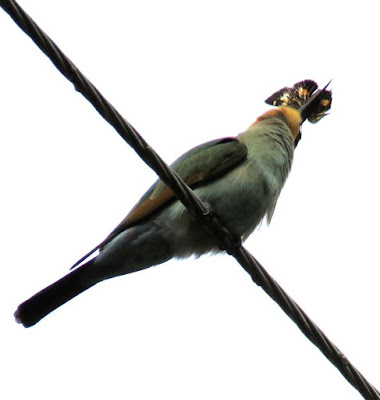Back from a holiday in New Zealand and now in home isolation for a couple of weeks, which for us is not a hardship as there are plenty of things to do around the property. It also gives me plenty of time to observe the wildlife, which I am pleased to say has started to come back since the drought has broken and we have now had rainfall in the three months above the total for all or 2019.
Working in the garden I noticed that the Butterfly Bush Buddleja davidii has recovered somewhat and the flowers were attracting butterflies, took a break, got the camera and shot a few photos.
 |
| Caper White (male) |
|
|
|
 |
| Caper White (female) |
Caper Whites Anaphaeis java teutonia are wide spread thoughout mainland Australia with migratory flights between many areas as the larval food plants tend to be found in the northern regions.
 |
| Meadow Argus | | |
|
Meadow Argus Junonia villida sub species calybe is a quite commonly seen butterfly and found throughout Australia where the larvae feed on a wide range of both native and exotic plants.
 |
| Orange Dart (male) |
The Orange Dart Cephrenes augiades sperthias range through coastal Australia, Indonesia through to the Solomon Islands. If you are growing palms in your garden they can be a bit of a pest, as the larvae chew their way through palm fronds on species such as Bangalow, Cabbage Tree and Kentia.
Although not on the Buddleja this Black and White Tiger Danaus affinis affinis landed for a short rest almost at my feet as I was taking the photos. This species is generally found further north and we are at the southern edge of where they are often seen although there are sighting as far south as Sydney..An attraction to our area is likely due to significant locations of the food plant that the larvae feed on Ischnostemma carnosum
a trailing plant which grows on the margins of salt creeks and swamps.


















































